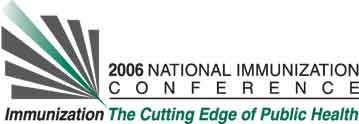Bo-Hyun Cho, Maureen S. Kolasa, and Mark L. Messonnier. National Immunization Program, Centers for Disease Control and Prevention, 1600 Clifton Rd. NE, Mailstop E-52, Atlanta, GA, USA
Learning Objectives for this Presentation:
By the end of the presentation participants will be able to describe influenza vaccination among high-risk children during the 2002-2003 influenza season.
Background:
Vaccination is the primary tool in prevention of influenza and is particularly important for children at increased risk for influenza-related complications. The Advisory Committee for Immunization Practices (ACIP) has recommended vaccination of children 6 months to 17 years with a medical condition placing them at increased risk for influenza-related complications.
Objectives:
Describe influenza vaccination coverage among children at high risk for influenza-related complications. Identify variables associated with influenza vaccination among these children.
Methods:
Outpatient claims for children age 1-17 years were extracted from the MarketscanĄ• dataset, a employer-sponsored, private US health insurance claims database. High-risk children (HRC) were defined as children with a diagnostic code for a chronic condition placing them at high risk for complications from influenza. Influenza coverage was defined as receipt of one influenza vaccine between August 2002 and April 2003.
Results:
Among the 718,265 children in the dataset, 112,154 (15.61%) were HRC. The influenza vaccination coverage rate for HRC was 11.74%, compared to 3.31% for non-HRC. Influenza vaccination coverage for HRC was 14.61% for age 1-4 yrs, 13.68% for 5-9yrs, 10.64% for 10-14 yrs and 7.47% for 15-17 yrs. Of those vaccinated children, the proportion of HRC receiving an influenza vaccination at their first office visit during the 2002-2003 influenza season was 21.76%, compared to 38.66% for non-HRC.
Conclusions:
In spite of recommendations, influenza vaccination coverage among HRC in this dataset was low during the 2002-2003 influenza season. Younger HRC were more likely to be vaccinated than older HRC. Missed opportunities for vaccination commonly occurred, with most HRC not receiving influenza vaccine at their first office visit during the influenza season. Providers need to place more emphasis on vaccinating children at high risk for influenza-related complications.
See more of Posters
See more of The 40th National Immunization Conference (NIC)

